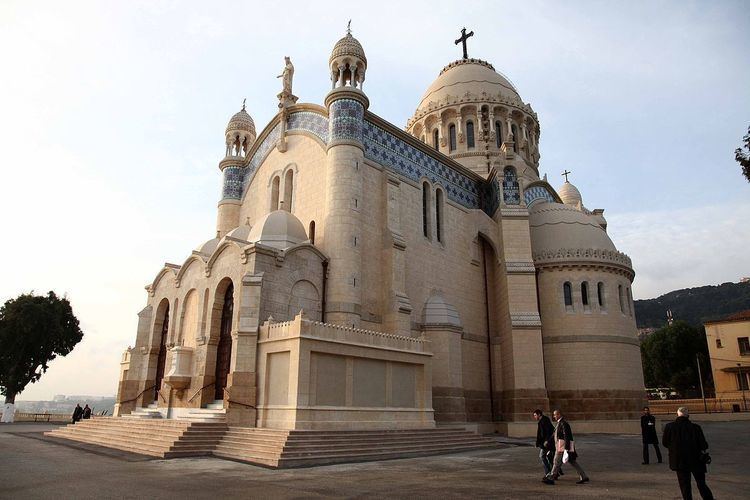Location Algiers, Algeria Ecclesiastical or organizational status Minor basilica Opened 1872 Groundbreaking 1858 | Affiliation Roman Catholic Completed 1872 Architectural type Church Architect Jean-Eugène Fromageau | |
 | ||
Address Rue de Zighara, Bologhine, Algeria Architectural style Byzantine Revival architecture District Roman Catholic Archdiocese of Algiers Similar Martyrs' Memorial - Algiers, Jardin d'Essai du Hamma, Bardo National Museum, Palais des Raïs, Ketchaoua Mosque | ||
Notre dame d afrique
Notre Dame d'Afrique (Our Lady of Africa) is a Roman Catholic basilica in Algiers, Algeria.
Contents
Visite de notre dame d afrique alger
History
It was Louis-Antoine-Augustin Pavy, who served as the Bishop of Algiers from 1846 to 1866, who paved the way for its construction. The basilica was inaugurated in 1872, after fourteen years of construction. It was founded by Charles Lavigerie. Its architect, Jean-Eugène Fromageau, who had been appointed the chief architect for ecclesiastical buildings in French Algeria in 1859, employed a Neo-Byzantine style. Its floor plan is unusual as the choir is situated on the southeast instead of the usual east side of the building.
The basilica contains 46 stained glass windows installed in the 19th century. They were blown out during a bombing of the area in April 1943 and have been restored twice since the end of World War II.
The basilica was damaged by the 2003 Boumerdès earthquake. A reconstruction project was initiated by Mgr Tessier (the archbishop of Algiers) in 2003, but work on the project didn't start until the spring of 2007. The total cost of restoration was 5.1 million euros. The project took three years to complete.
Location
Notre Dame d'Afrique is on the north side of Algiers, on a 124 m (407 ft) cliff overlooking the Bay of Algiers. It formerly could be reached from the city centre by a cable car. It can be considered to be the counter-piece to the church of Notre-Dame de la Garde on the other side of the Mediterranean, in Marseille.
Importance
Its symbolic and religious importance can be summed up by the inscription on the apse: Notre Dame d'Afrique priez pour nous et pour les Musulmans ("Our Lady of Africa, pray for us and for the Muslims").
